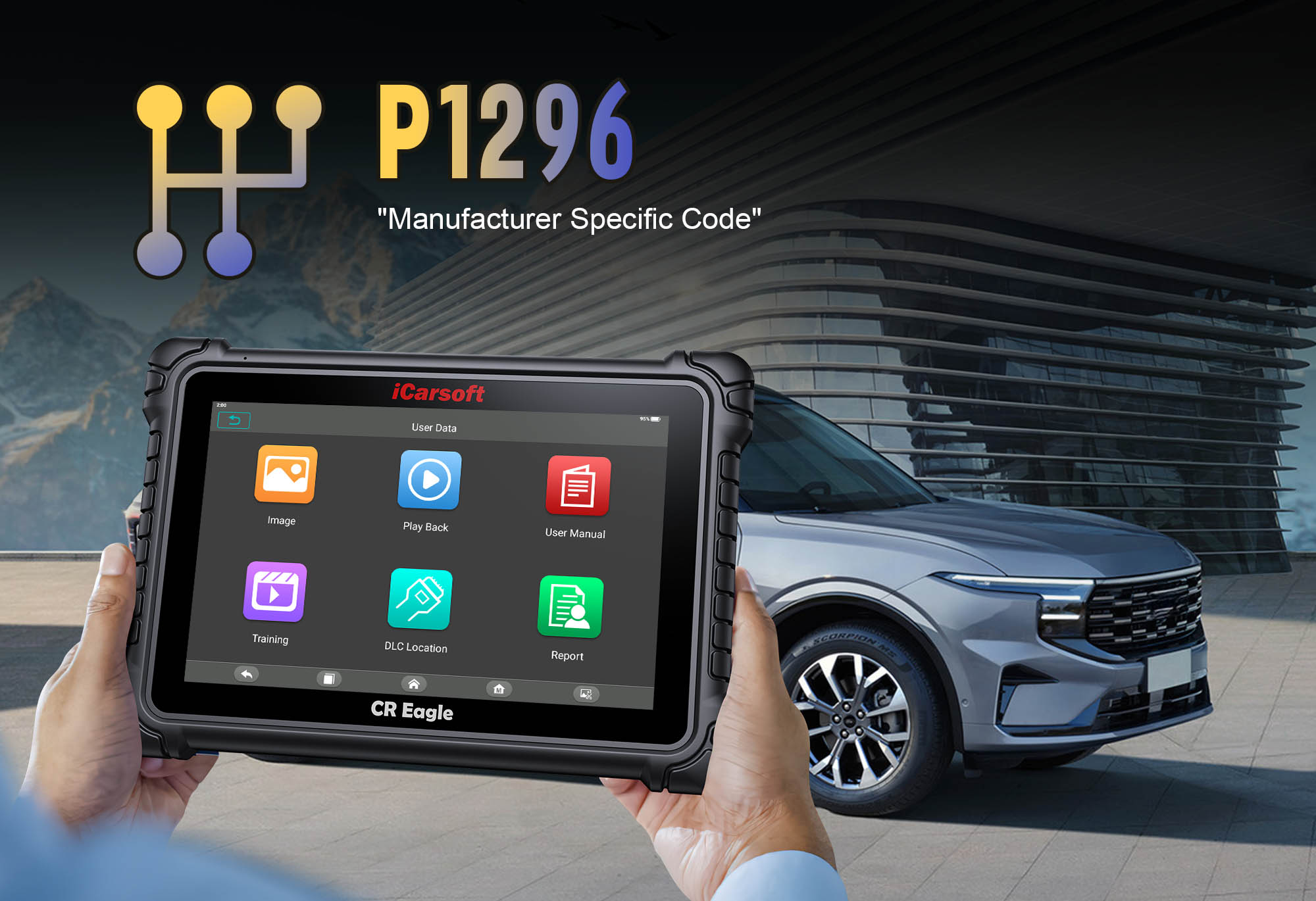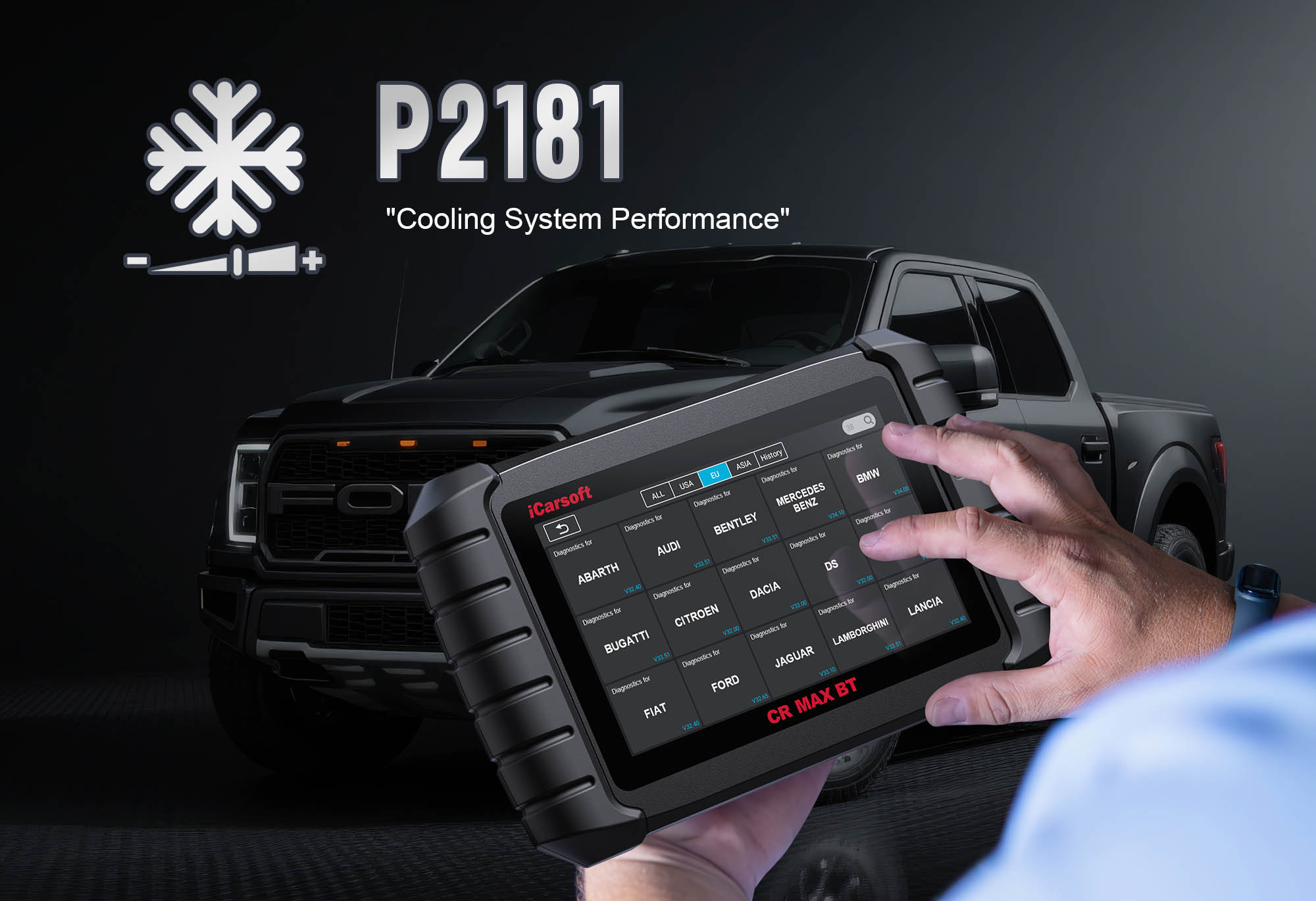Diagnose and Clear P1296: Fix Engine Coolant Temperature Sensor Issues with iCarsoft CR Eagle
When your vehicle’s check engine light activates and a diagnostic scan reveals the P1296 code, it’s signaling a problem with the engine coolant temperature (ECT) sensor or its related circuit. Specifically, this code indicates that the ECT sensor is providing readings that fall outside the normal operating range, or there’s a malfunction in the circuit that connects the sensor to the engine control module (ECM). A faulty ECT sensor can disrupt the engine’s ability to regulate fuel injection, ignition timing, and cooling system operation, leading to issues like overheating, poor fuel efficiency, and even engine damage. With the iCarsoft CR Eagle, you can accurately diagnose the root cause of P1296 and clear the code once the problem is resolved. Let’s explore how to address this issue effectively.
Understanding P1296: The Role of the Engine Coolant Temperature Sensor
The engine coolant temperature sensor is a critical component that monitors the temperature of the engine’s coolant, sending real-time data to the ECM. This information helps the ECM make key adjustments: increasing fuel delivery when the engine is cold to aid in starting, reducing fuel flow as the engine warms up, and activating the cooling fan when coolant temperatures rise too high. The ECT sensor typically uses a thermistor—a resistor that changes resistance with temperature—to send voltage signals to the ECM. When the sensor or its circuit fails, the ECM receives inaccurate or no data, triggering the P1296 code.
Symptoms of P1296
-
Illuminated Check Engine Light: The primary indicator that the ECM has detected an issue with the ECT sensor or its circuit.
-
Erratic Engine Performance: Cold-start problems, rough idling, or hesitation during acceleration, as the ECM can’t adjust fuel mixture correctly without accurate temperature data.
-
Overheating Risk: The cooling fan may fail to activate when needed, increasing the risk of engine overheating, especially in stop-and-go traffic or hot weather.
-
Poor Fuel Economy: Incorrect temperature readings can cause the engine to run rich (too much fuel) longer than necessary, wasting fuel.
Common Causes of P1296
|
Cause
|
Description
|
|
Faulty ECT Sensor
|
Worn or damaged sensor with inaccurate resistance values, leading to incorrect voltage signals. Degraded by high temperatures and coolant exposure over time.
|
|
Damaged Wiring/Connectors
|
Corroded, loose, or broken wires in the ECT circuit, or faulty connectors disrupting signal flow. Exacerbated by moisture and vibration.
|
|
Coolant Contamination
|
Debris or corrosion in coolant coating the sensor tip, preventing accurate temperature measurement.
|
|
ECM Malfunction
|
Rare, but ECM may fail to interpret sensor signals correctly, though less common than sensor or circuit issues.
|
Why iCarsoft CR Eagle is Ideal for Diagnosing P1296
The iCarsoft CR Eagle is more than just a basic code scanner—it’s a specialized tool designed to tackle cooling system and sensor issues like P1296 with precision. Here’s how it stands out:
Advanced Sensor Testing
Live Temperature Data Monitoring
Streams real-time ECT readings to compare against actual coolant temperature (verified with infrared thermometer), identifying mismatches.
Voltage and Resistance Checks
Measures circuit voltage (typically 5V from ECM) and sensor resistance at different temperatures, verifying compliance with manufacturer specs.
Circuit Diagnostics
Continuity and Short Detection
Tests for open (breaks) or short circuits in the ECT wiring, pinpointing damaged sections disrupting signal flow.
Connector Integrity Guidance
Provides steps to inspect ECT connectors for corrosion, bent pins, or looseness—common causes of signal disruption.
Vehicle-Specific Features
Component Location Diagrams
Detailed maps showing ECT sensor placement (engine block, cylinder head, thermostat housing) for your specific vehicle (Ford, Toyota, etc.).
Manufacturer Specifications
Stores reference data for normal ECT resistance and voltage ranges, enabling quick identification of out-of-spec readings.
Step-by-Step: Diagnosing and Clearing P1296 with iCarsoft CR Eagle
-
Retrieve the Code and Check for Related Issues
Connect the CR Eagle to your vehicle’s OBD-II port, power on, and select your vehicle’s make/model/year (use AutoVIN for automatic detection). Navigate to "OBD-II" > "Read Codes" to confirm P1296. Note related codes (e.g., P0117/P0118 for ECT circuit voltage issues) to expand diagnosis.
-
Monitor Live ECT Sensor Data
Access "Live Data" > "Engine Sensors" > "Engine Coolant Temperature." Start the engine and monitor readings as it warms. Compare to actual coolant temperature (via infrared thermometer on thermostat housing/radiator). A >10–15°F mismatch indicates a faulty sensor. Check voltage (0.5V cold to 4.5V hot); abnormal values signal a circuit issue.
-
Test the ECT Sensor and Circuit
Go to "Special Functions" > "Sensor Tests" > "Engine Coolant Temperature Sensor." The CR Eagle runs a resistance test, comparing results to vehicle specs (e.g., 2,000–3,000 ohms at 77°F; 200–300 ohms at 212°F). Out-of-range values confirm a bad sensor. Use "Circuit Test" to check wiring continuity—no continuity means a broken wire.
-
Inspect and Repair Components
Use "Component Location" to find the ECT sensor. Disconnect its connector and inspect for corrosion, bent pins, or looseness—clean with contact cleaner or replace. Remove the sensor (when cool) and check for contamination/damage; clean or replace with OEM part if faulty. Inspect wiring for fraying/cuts and repair.
-
Clear the Code and Verify Repairs
After repairs, select "Clear Codes" to erase P1296. Let the engine warm to operating temperature (195–220°F) and monitor live ECT data. Test drive (idle and acceleration) and re-scan—no code recurrence confirms resolution.
Tips to Prevent P1296 from Recurring
-
Check Coolant Levels Regularly: Low coolant exposes the ECT sensor to air, causing inaccuracies. Maintain levels and replace coolant per schedule (30,000–100,000 miles).
-
Inspect the ECT Connector: During oil changes, check for corrosion/looseness. Apply dielectric grease to protect against moisture.
-
Use Quality Coolant: Avoid mixing types—use manufacturer-specified coolant to prevent corrosion/deposits on the sensor.
-
Run Periodic Scans with CR Eagle: Use "Sensor Health Check" quarterly to monitor ECT readings, catching issues before codes trigger.
Final Take: Master P1296 with CR Eagle
The P1296 code highlights critical issues with your engine’s temperature monitoring system—ignoring it risks overheating, poor performance, and costly damage. With the iCarsoft CR Eagle’s advanced tools—live data monitoring, sensor resistance testing, and circuit diagnostics—you can pinpoint whether the problem is a faulty ECT sensor, damaged wiring, or a contaminated connector.
Whether you’re a DIY enthusiast or technician, the CR Eagle eliminates guesswork, ensuring you fix the root cause efficiently. Don’t let a faulty temperature sensor compromise your engine’s safety—trust the CR Eagle to restore accurate coolant monitoring and keep your vehicle running smoothly.
FAQs About P1296 Code
Q: Can I drive with P1296?
A: Short-term driving may be possible, but prolonged operation risks overheating or poor performance. Address promptly to avoid engine damage.
Q: How much does it cost to fix P1296?
A: $50–$150 for an ECT sensor replacement; $30–$100 for wiring/connector repairs. ECM issues (rare) cost significantly more.
Q: How do I know if it's the sensor or the circuit?
A: Use the CR Eagle’s resistance tests (sensor) and continuity checks (circuit). A sensor with out-of-spec resistance is faulty; abnormal voltage/circuit breaks point to wiring issues.
Q: Will coolant flush fix P1296?
A: It may if contamination is coating the sensor, but if the sensor itself is faulty or wiring is damaged, a flush alone won’t resolve the code.





